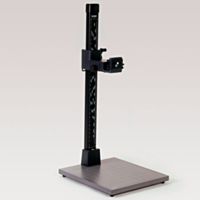Jargon buster part 2: a guide to photographic printing terms

If you’ve just started printing your images, you’re probably not familiar with all of the terminology. We’ve decided to create a guide to basic photographic printing terms to help you get started. In part two of our Jargon Buster blogs, we’re looking at all things ink, so if you don’t know your cartridges from your continuous flow system, you’re in the right place!
For more photographic printing terms explained, make sure you check out part one of our jargon buster which looks at paper.

DYE-BASED INKS
Dye inks are liquid colorants that have been completely dissolved in fluid, like sugar in water. They are easily deposited in small drops and absorbed into the top layer of the paper. While Dye inks tend to be cheaper than pigment inks, they offer good colour vibrancy, as well as good detail. However, dye inks tend to fade quicker, especially when exposed to sunlight, and because they’re water soluble, the ink will run if it gets wet. However, advances are being made in new dyes that improve its resistance to fading.
PIGMENT INKS
Pigment inks are made up of particles of insoluble colour, sometimes contained in a resin coating, and suspended in liquid. These ink particles settle in the paper’s fibres, and bond with them once dry. As a result, pigmented inks are more water resistant and are less likely to fade. As a result, pigment inks are good for professional photographs, which are expected to last.
Fotospeed carry a wide range of both pigment and dye inks, which you can find here.
COLOUR GAMUT
A colour gamut is the range of hues which a certain system, such as your monitor or your printer, is able to reproduce. The larger the gamut, the more saturated colours are available.
DPI
DPI means dots per inch. Basically, the amount of ink dots deposited onto the paper by your printer. In simple terms, the more dots, the better the image.
CMYK
CMYK stands for Cyan, Magenta, Yellow, and Key. Key is another name for black. These are the four basic ink colours used in standard printers. Most printers reproduce a variety of different colours and shades by layering these colors in specific ways. However, as with most things, the colour gamut of a CMYK is limited.
RGB
RGB stands for Red, Green, and Blue. This is the system usually used on monitors to display colour. These are ‘additive’ colours, and work to display a range of colours by adding differing amounts of red, green, and blue. As a result, RGB offers a particularly wide colour gamut. However, this doesn’t translate into print when using a CMYK system, because its colour gamut isn’t as wide and can’t replicate RGB colours.
INK CARTRIDGES
An ink cartridge sits inside your inkjet printer. It contains the ink and deposits it onto your paper during the printing process. Different manufacturers make ink cartridges in different ways – some will have a separate cartridge for each colour, some will include black and colour in the same cartridge, and some will just separate black from all the colours.
CONTINUOUS FLOW SYSTEM
A continuous flow system is a solution chosen by lots of businesses because it increases printing capacity. It works by using pressure to allow an external attachment (an ink tank) to drip feed ink into your printer cartridges, so for every drop of ink that gets used in printing, a drop is replaced from the tank. This means that the cartridges never have to be replaced. At Fotospeed, we have spent 12 years developing completely useable inkflows for almost all Epson desktop printers which can help save up to 80% on ink costs. You can find out more about the perks of of a Fotospeed inkflow here.
Still unsure about some photographic printing terms? If you need more printing advice, why not check out our support page? For more information about what inks are available at Fotospeed, click here.
If you would like to stay on top of all the latest information from Fotospeed don't forget to sign up to our Newsletter.










